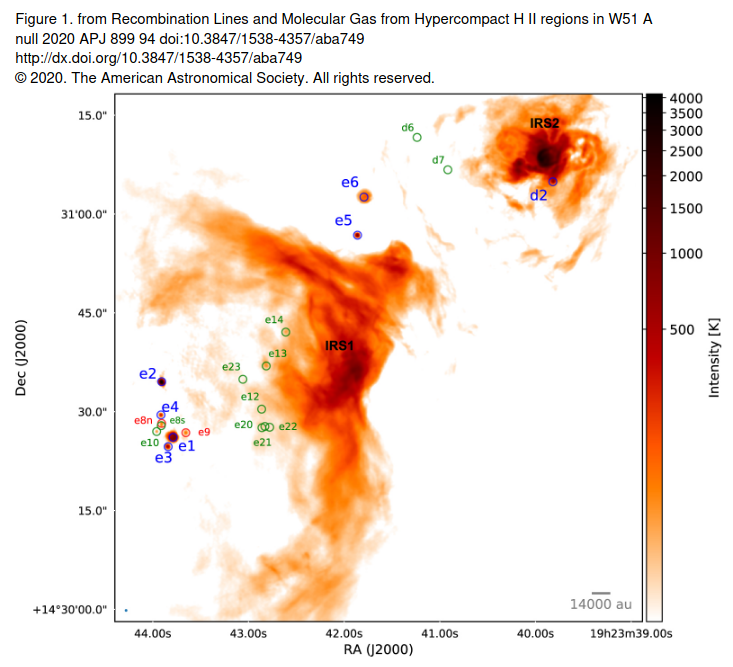The paper of student Rudy Rivera-Soto appeared in the The Astrophysical Journal! Link here.
Rudy did an excellent Master's thesis. He did a thorough study of the radio free-free continuum, Hydrogen recombination-, and molecular lines from the hypercompact HII regions in W51A, using data from the VLA and ALMA previously presented in Ginsburg et al. 2016 and Ginsburg et al. 2017, respectively.
We found that most hypercompact HII regions, as defined by their sizes D < 0.05 pc, are not really as dense (n_e > 10^6 cm^-3) as usually thought of. This makes sense, since current deep cm surveys are capable of detecting tiny HII regions associated to B-type stars, expected to be more abundant than those associated to O stars. Indeed, the HII region sample follows the inverse relation between electron density n_e and size found a while ago, e.g., Garay and Lizano 1999. Also, a kinematical analysis of the subset of sources where this could be done suggests that the ionized gas is predominantly expanding, while the surrounding molecular gas presents a mixture of inflow and outflow.
We hypothesize that there could be two different types of hypercompact HII regions: those that essentially are smaller, expanding UC HII's; and those that are also hyperdense (n_e > 10^6 cm^-3), probably associated with O-type stars in a specific stage of their formation (still accreting?) or early life.
